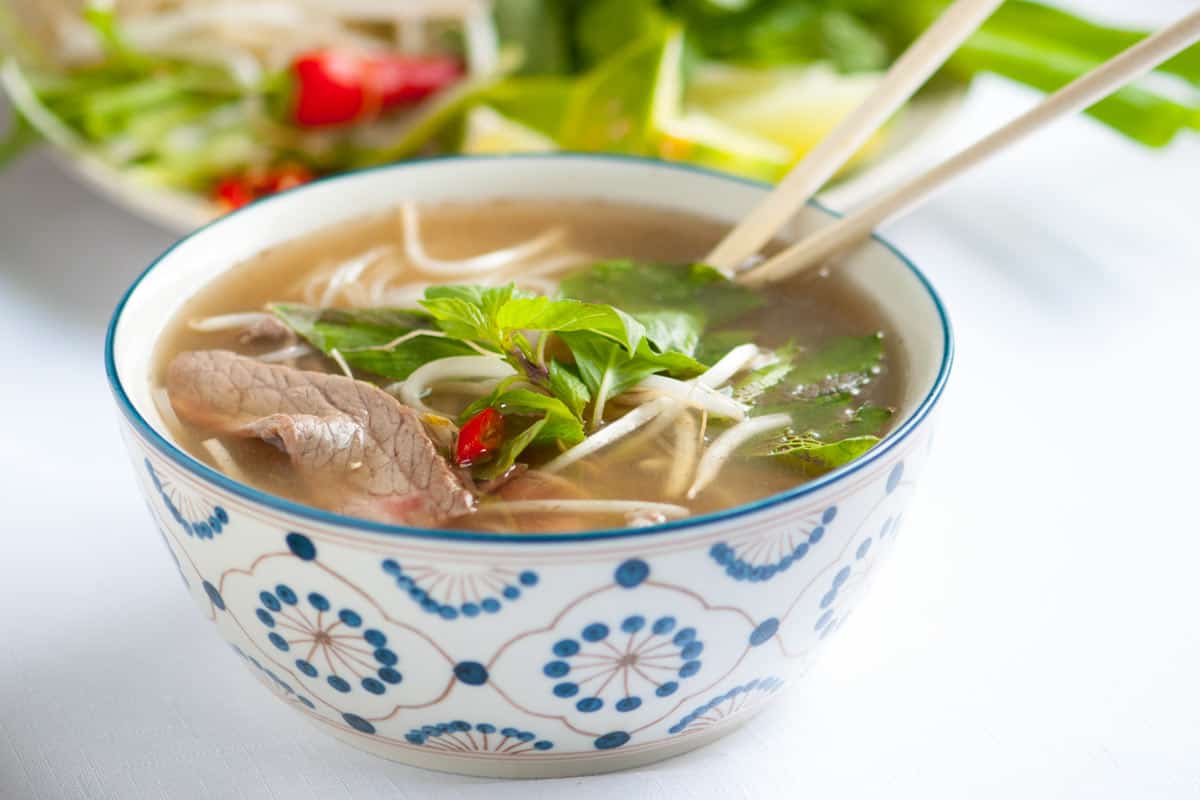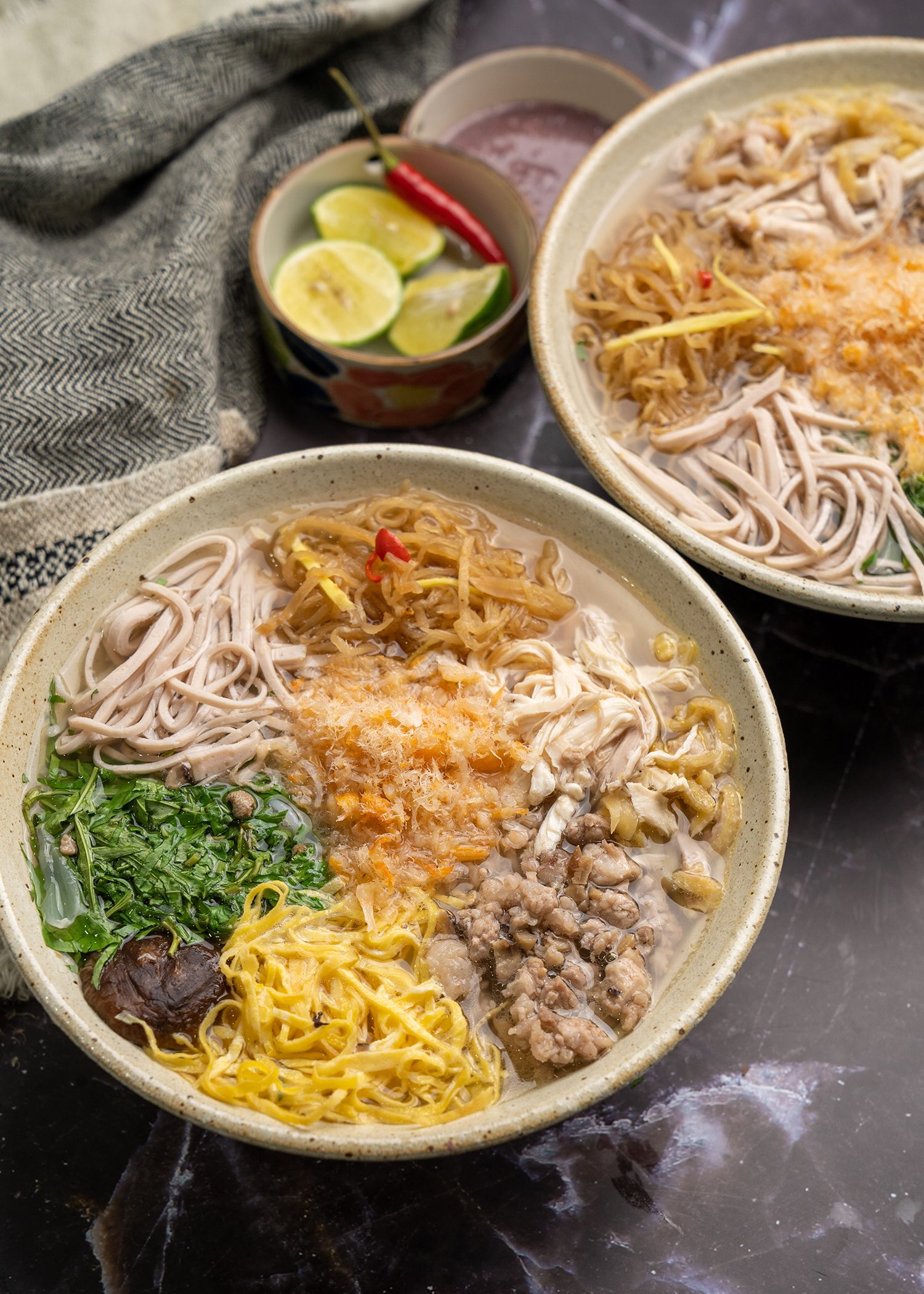
Vietnamese soup cuisine: Top 5 must-eat!
Vietnamese soup cuisine is a cornerstone of the nation’s culinary identity, celebrated for its diverse flavors, regional variations, and emphasis on fresh, seasonal ingredients. This comprehensive description highlights the key features, ingredients, and regional variations that make Vietnamese soup cuisine so unique and celebrated.

Vietnamese soup cuisine
Vietnamese soup cuisine is a cornerstone of the nation’s culinary identity, celebrated for its diverse flavors, regional variations, and emphasis on fresh, seasonal ingredients.
Key Features:
- Broth as the Heart: The foundation of every Vietnamese soup lies in its broth. These broths are meticulously crafted, often simmered for hours to extract maximum flavor from bones, vegetables, and aromatics.
- Balance of Flavors: Vietnamese soups expertly balance sweet, sour, salty, and spicy notes, creating a symphony of taste in every spoonful.
- Fresh Ingredients: Emphasis is placed on using the freshest ingredients, including a variety of herbs, vegetables, and meats.
- Regional Diversity: Vietnamese soups showcase the country’s regional culinary traditions, with each region boasting its own unique specialties and flavor profiles.
- Cultural Significance: Soup plays a significant role in Vietnamese culture, serving as both a nourishing meal and a social connector, often shared among family and friends.
Key Ingredients:
- Broth: The foundation of any Vietnamese soup. Ingredients can include bones (beef, pork, chicken), vegetables (onions, carrots, tomatoes), herbs (ginger, lemongrass, cilantro), and spices (star anise, cinnamon).
- Noodles: Rice noodles of various shapes and sizes are commonly used.
- Protein: Meat (beef, pork, chicken, seafood), tofu, and sometimes offal are common protein sources.
- Vegetables: A wide variety of vegetables are used, including leafy greens, bean sprouts, mushrooms, and water spinach.
- Herbs and Spices: Fresh herbs like cilantro, basil, mint, and Vietnamese coriander play a crucial role in enhancing the flavor.
Regional Variations:
- Northern Vietnam: Known for lighter broths and a focus on fresh herbs and vegetables.
- Central Vietnam: Often features spicier broths and the use of unique ingredients like lemongrass and shrimp paste (as seen in Bun Bo Hue).
- Southern Vietnam: Characterized by richer broths, sometimes incorporating coconut milk, and the influence of Mekong Delta cuisine.
Vietnamese soups are a testament to the country’s culinary artistry, offering a diverse and flavorful journey for every palate. Whether it’s the comforting warmth of Pho, the spicy kick of Bun Bo Hue, or the refreshing tang of Canh Chua, each bowl tells a story of Vietnamese culture, history, and the enduring love for good food.
Top 5 Vietnamese soup with iconic tastes
Vietnamese cuisine boasts a rich tapestry of flavorful soups, each with its unique character and regional origins. Here are some of the most iconic:
1. Pho
- Key Ingredients:
- Broth: Slow-cooked beef or chicken broth with a delicate balance of spices like star anise, cinnamon, ginger, and cloves.
- Noodles: Wide rice noodles (pho)
- Protein: Sliced beef (rare, well-done, or brisket), chicken, or sometimes seafood.
- Garnishes: Fresh herbs like cilantro, basil, and green onions; bean sprouts; lime wedges; and chili peppers.
- Taste: Savory, fragrant, and comforting.
- Usage: Breakfast, lunch, or dinner; a popular street food and a staple in Vietnamese cuisine.
- Regional Features:
- Northern Style: Often features a richer broth and a wider variety of beef cuts.
- Southern Style: Typically has a sweeter broth and often includes chicken.
2. Bun Bo Hue
:max_bytes(150000):strip_icc()/20230915-SEA-BunBoHue-Vy-Tran-hero-d3a9082377414ca68f3540ceae84fa61.jpg)
- Key Ingredients:
- Broth: Spicy and flavorful broth made with lemongrass, chili peppers, shrimp paste, and often pork bones.
- Noodles: Rice vermicelli
- Protein: Beef (often with beef tendon and offal), pork sausage.
- Garnishes: Fresh herbs, bean sprouts, chili peppers, and often a squeeze of lime.
- Taste: Spicy, savory, and intensely flavorful.
- Usage: Popular breakfast or lunch dish.
- Regional Features: Originates from the central city of Hue, known for its spicy and flavorful cuisine.
3. Canh Chua (Sour and Sweet Soup)
- Key Ingredients:
- Broth: Sour and tangy broth made with tamarind or other souring agents (like tomatoes or pineapple).
- Protein: Fish, shrimp, or tofu.
- Vegetables: A variety of vegetables, including tomatoes, okra, and leafy greens.
- Taste: Sour, sweet, and slightly spicy.
- Usage: A light and refreshing soup, often enjoyed during hot weather.
- Regional Features: Widely enjoyed throughout Vietnam, with regional variations in ingredients and souring agents.
4. Bun Thang

- Key Ingredients:
- Broth: Clear chicken broth
- Noodles: Rice vermicelli
- Unique Presentation: A visually stunning dish with a variety of colorful ingredients arranged artfully on top of the noodles, including shredded chicken, egg strips, shrimp, and various vegetables.
- Taste: Delicate and flavorful, with a focus on the visual presentation.
- Usage: Often enjoyed for special occasions or as a celebratory dish.
- Regional Features: Originated in Hanoi, known for its elegant presentation and delicate flavors.
5. Bun Rieu
- Key Ingredients:
- Broth: Rich and flavorful broth made with crab or tomato.
- Noodles: Rice vermicelli
- Protein: Crab, shrimp, and sometimes ground pork.
- Unique Element: Often includes a crab paste that gives the broth a deep, savory flavor.
- Taste: Savory and slightly sweet, with a subtle crab flavor.
- Usage: Popular street food and a favorite among locals.
- Regional Features: Widely enjoyed throughout Vietnam, with variations in the type of crab used and the intensity of the crab flavor.
This is just a glimpse into the diverse world of Vietnamese soups. Each bowl offers a unique flavor experience, reflecting the rich culinary heritage and regional variations of this vibrant country.
Tips to Enjoy Vietnamese Soup
- Embrace the Broth: Start by savoring the broth. Vietnamese soups are often defined by their rich and flavorful broths, so take a moment to appreciate the nuances of each sip.1
- Customize to Your Taste:
- Add Herbs and Spices: Don’t hesitate to add fresh herbs (cilantro, basil, mint) and chili peppers to enhance the flavors.
- Adjust Seasoning: Add a squeeze of lime or a dash of fish sauce to personalize the taste to your liking.
- Explore Condiments: Most soup stalls or restaurants will provide a selection of condiments like chili sauce, hoisin sauce, and pickled vegetables. Experiment with different combinations to find your perfect flavor profile.
- Use Chopsticks and Spoon: Use chopsticks to pick up noodles and other ingredients, and a spoon to sip the broth.2
- Slurp Respectfully: In Vietnamese culture, slurping noodles is considered a sign of enjoyment. Don’t hesitate to slurp gently to savor the flavors.
- Finish the Broth: Finishing the broth is considered a sign of appreciation for the chef’s hard work.
- Embrace the Experience: Vietnamese soup is more than just a meal; it’s a cultural experience. Enjoy the atmosphere, the flavors, and the opportunity to connect with the local cuisine.
By following these tips, you can truly savor the unique flavors and cultural significance of Vietnamese soup.
Pro Tip: If you’re unsure about how to adjust the flavors, don’t hesitate to ask the restaurant staff for recommendations. They will be happy to guide you.
